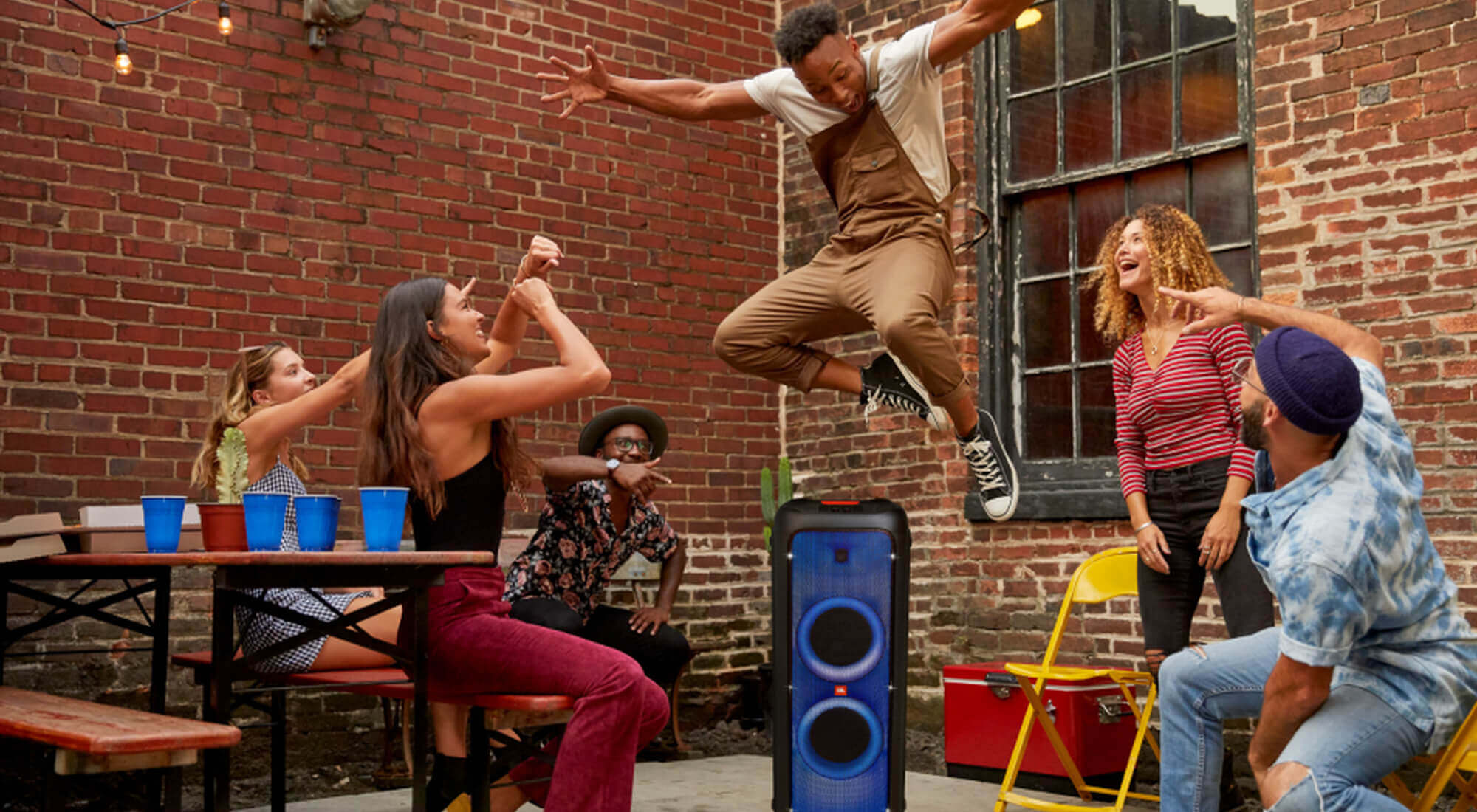Home theatre cable management – Fixing the mess
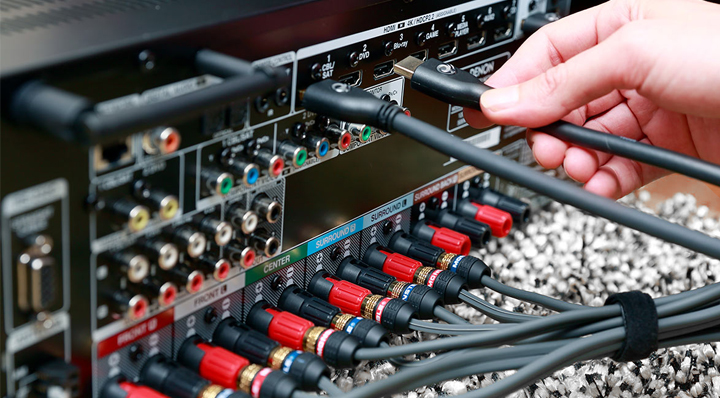
You may have the best TV, the best speaker system, and an outstanding A/V receiver. However, if your cables look like a slinky that’s been thrown into a washing machine, then this guide may be for you.
Most set up have 3 problem areas:
- Wires hanging down from your wall-mounted TV
- A bundle of cables running to the back of your A/V receiver
- Wires running from your rear surround sound speakers back to your receiver
Today we’ll let you know some simple and inexpensive fixes for each issue.
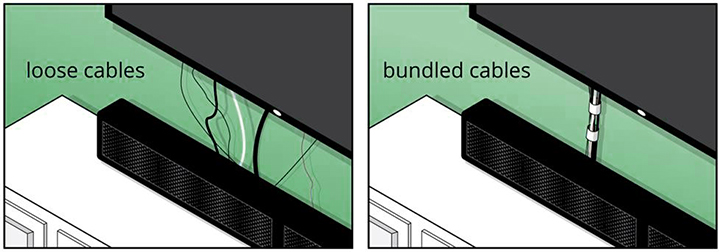
Bundle cables under your TV
Use wire ties to bundle cables
If you have a lot of cables running to and from your TV, then an easy option is to bundle the cables with some ties.
You can use standard cable ties to fix them up, otherwise, if you’re renting or maybe moving around a lot, then you may consider a reusable solution like some Velcro cable wraps which work absolutely fantastically and look pretty good.
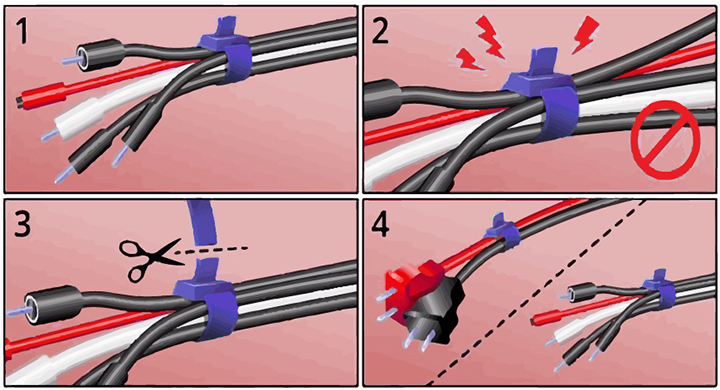
Here are some tips on how to do this effectively.
- Once you’ve routed and connected all the cables. Bundle only one end, this will make them much easier to handle.
- Don’t tighten them too much as the insulation gets damaged if the wires get crimped.
- If using cable ties, make sure you snip off the excess with a pair of scissors.
- To make management easier, bundle A/V cables and power cables separately.

Secure your wire bundles
Use pads to secure your cables
Adhesive pads that are designed to work with wire ties can be attached to the walls. These help keep rear channel speaker wires out of your way by securing them to the wall.
These pads can also hold a cable bundle that running from your wall-mounted TV, flat onto against the wall for it to look much neater. You can also use these to fasten the wires or bundles to the back of your TV cabinet.
These adhesives can also hold a cable bundle running from a wall-mounted TV flat against the wall for a neater appearance. You can also use them to fasten wires and wire bundles to the back of your A/V cabinet.
You may also use cable clamps to secure them. Ensure you match the shape and size of the clamp to the cables and bundles you wish to use them on. These are secure and can be easily removed and re-attached if you ever need to re-arrange your cables.
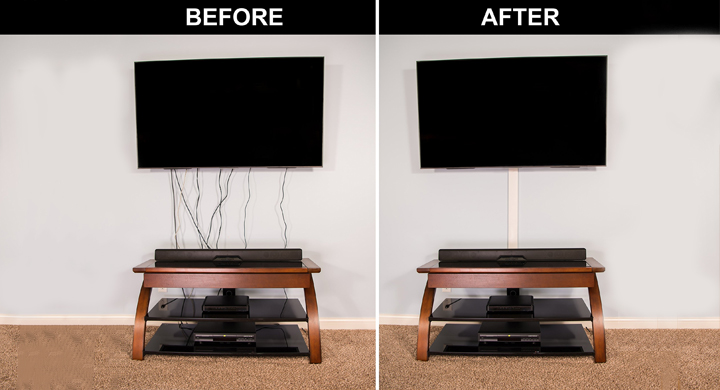
Use raceways to conceal cables
The best looking solution for loose cables
Running wires through your walls can not only be a hassle but also may not be an option for many people. Raceways are designed to make your cable management “blend” with your walls.
Raceways are usually made out of plastic or wood that will conceal and protect your wires and bundles. They’re easy to install on walls and baseboards. Most of them can be painted so that way you can virtually make them disappear if you wish them to blend with the color of your walls.
They come in many different sizes, so if you’re looking to use this solution for a cable bundle, then you have to make sure the raceway is big enough to fit over it.
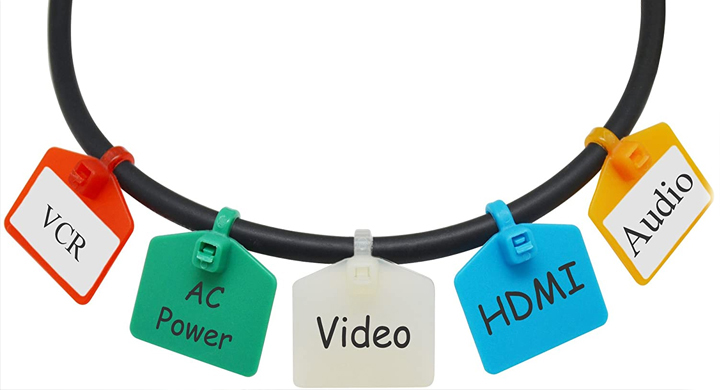
Label everything
Easier managing, easier life
It’s better to be able to easily identify what cable is which, so if you ever need to swap anything out, you’d know exactly what to look for. This can be hard when you’re looking at a bundle of wires unless you’re tracing the cables from one end to another.
Color-coded cable labels are a very good solution for this. They’re usually pre-colored so that you can mix and match whatever suits you.
Of course, you can also make your own labels any way you need. The important part of this is that, even if your system is small and fairly simple, as it grows, you’ll be glad that you had this organized from the start.
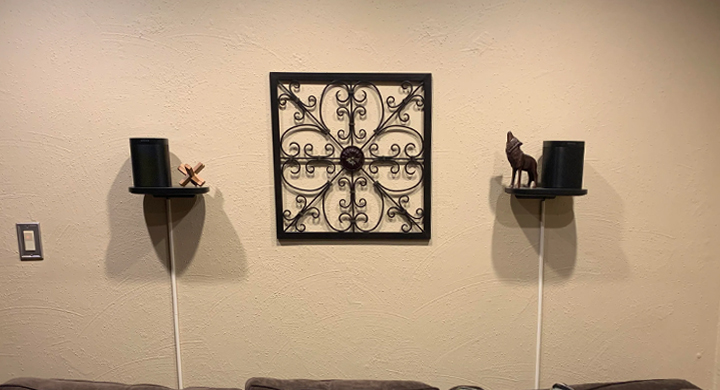
Secure loose wires running to rear surround speakers
You don’t want to be tripping over
Rear speakers are a bit of a hassle, considering they’re not really near your A/V receiver and usually are situated behind where you sit. You’ll need to secure these wires so that you don’t step or trip over them, which can cause damage to your speaker system (and yourself, which we don’t want!)
It’s not the best idea to run wires under carpeting especially if they’re in high-traffic areas. If the wires are constantly stepped on, over time the insulation can get rubbed away, causing them to fail. It’s best to run rear channel wires along the baseboard.
Wire tacks are some of the easiest ways to secure these, or if you prefer the look or raceways, then that is also an option.
We hope this helps solve some of your cable management issues!








